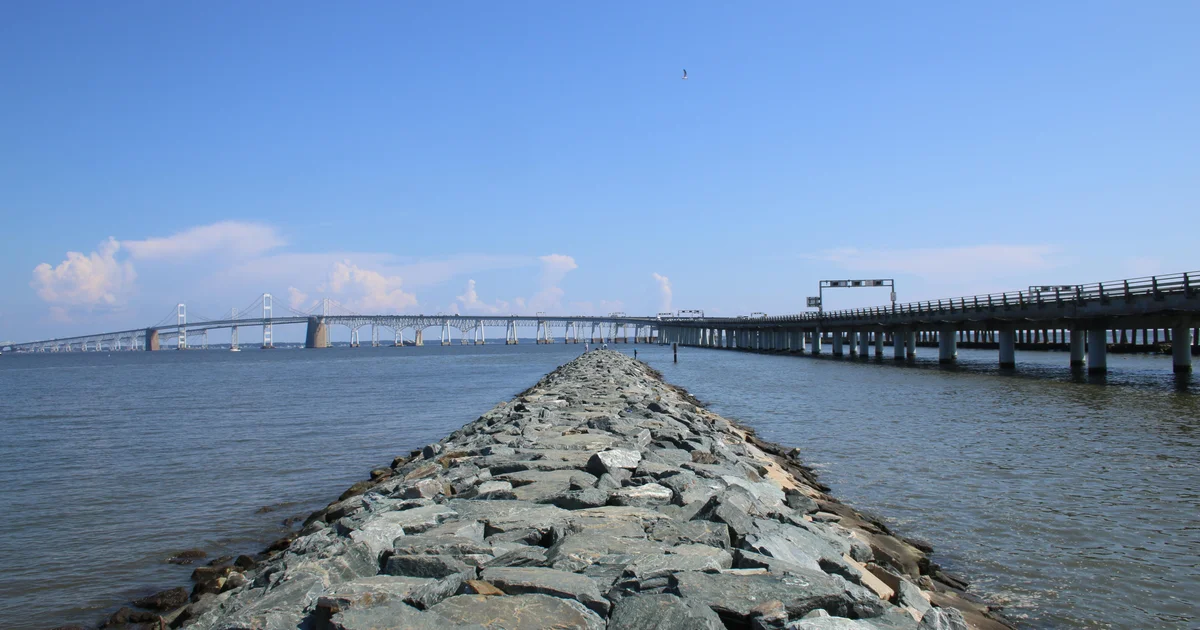
Chesapeake Bay watershed health declined in 2024, report shows
How did your country report this? Share your view in the comments.
Diverging Reports Breakdown
Chesapeake Bay watershed health declined in 2024, report shows
Chesapeake Bay declined in health in 2024, according to an annual report published by the University of Maryland Center for Environmental Science. The report, which uses data from 2024, gave the Bay a C grade, down from last year’s C+. The health of the surrounding watershed was given a grade of C+.Despite the decline in health, the Bay has shown long-term improvements over the last couple of decades, the report shows. Six regions – including Elizabeth, James, Patapsco and Back Rivers, Upper Western Shore, Upper Bay and Lower Bay – have shown long term improvements. The Upper Eastern Shore was the only region to show declining trends. The Bay’s freshwater is becoming saltier due to an issue called freshwater salinization. The change is caused by rainfall patterns, drought, rises in sea level and human activities.
Chesapeake Bay gets C on health report card
Chesapeake Bay gets C on health report card
The health of the Chesapeake Bay declined in 2024, according to an annual report published by the University of Maryland Center for Environmental Science (UMCES).
During the annual assessment, officials look at ecological, societal and economic indicators. The report, which uses data from 2024, gave the Bay a C grade, down from last year’s C+. The health of the surrounding watershed was given a grade of C+.
Despite the decline in health in 2024, the Bay has shown long-term improvements over the last couple of decades, the report shows.
Chesapeake Bay health declined in 2024
UMCES looked at seven bay indicators and 12 watershed indicators to grade the health of the waterways.
According to the report, bay indicators like nitrogen levels, oxygen levels and water clarity are used to assess the health of the aquatic ecosystem, while watershed indicators look at external factors like protected lands in the area, job growth and temperatures.
UMCES said the decrease in score is not surprising due to the weather conditions in 2024.
According to the report, 2024 was the hottest year on record, with extreme rainfall patterns. Parts of the watershed experienced drought with short, intense bursts of rainfall that caused runoff.
“These downpours can cause water to flow over the ground rather than soak into it, increasing the fertilizer, dirt and debris carried into waterways,” the report said.
Despite the decreased score, the Bay has shown improvements since the 1980s, according to the report.
Six regions – including Elizabeth, James, Patapsco and Back Rivers, Upper Western Shore, Upper Bay and Lower Bay – have shown long-term improvements. The Upper Eastern Shore was the only region to show declining trends.
The Chesapeake Bay declined in health in 2024, according to an annual report published by the University of Maryland Center for Environmental Science (UMCES). University of Maryland Center for Environmental Science
Some indicators, like dissolved oxygen and total nitrogen levels, have also shown long-term improvements, while chlorophyll and water clarity scores have declined, the report shows.
UMCES attributed the improvements to management and restoration efforts, including upgraded wastewater treatment plants, reduced nutrient and sediment, seagrass restoration and oyster plantings.
“This year’s report underscores the importance of continued investment and highlights the progress we’ve made over the last decade,” said Dr. Fernando Miralles-Wilhelm, President of UMCES.
Chesapeake Bay freshwater gets saltier
With more than 100,000 miles of streams and millions of acres of lakes and reservoirs, the Chesapeake Bay region provides drinking water, resources for farmers, and power.
UMCES determined that the Chesapeake Bay’s freshwater is becoming saltier due to an issue called freshwater salinization.
The change is caused by rainfall patterns, drought, rises in sea level and human activities.
The report shows freshwater salinization is expected to get worse as the population in the area increases and the environment continues to change.
The report recommends switching to eco- and pet-friendly salt during the winter and using less de-icing product on roads and sidewalks.
Baltimore waterways show declining water quality
In May, a similar study from non-profit Blue Water Baltimore found that the water quality at the Inner Harbor and surrounding watershed has declined in the past decade.
According to the report, water quality at the Baltimore Harbor, Gwynn Falls and the Patapsco River regions declined between 2013 and 2024.
Water quality in the Jones Falls region slightly improved.
The report detailed that chlorophyll levels were poor in most areas, while bacteria levels and dissolved oxygen levels improved.
Source: https://www.cbsnews.com/baltimore/news/maryland-chesapeake-bay-ecology-health-water-quality/
